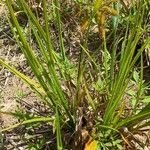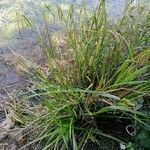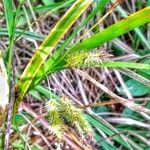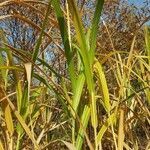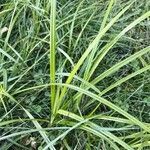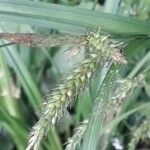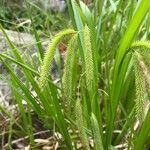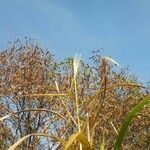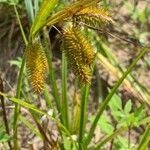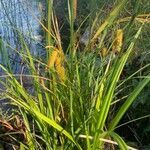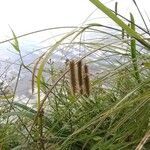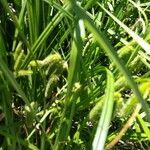Plants densely to loosely cespitose; rhizomes short, no more than 10 cm. Culms trigonous in cross section, 25–100 cm, scabrous distally. Leaves: basal sheaths pale brown (rarely faintly red tinged); ligules usually much longer than wide; blades mid to dark green, flat to W-shaped, 4–13 mm wide, glabrous. Inflorescences 4–15 cm; proximal bract 12–55 cm, greatly exceeding inflorescence; proximal 2–5 spikes pistillate, erect or the proximal pendent, cylindric, 9–12 mm thick; terminal 1 spike staminate or, rarely, gynaecandrous, androgynous, or mixed. Pistillate scales lanceolate-acuminate, 2.5–8.6 × 0.3–0.6 mm, the distal shorter and the proximal longer than perigynia, margins ciliate, apex scabrous-awned. Staminate scales scabrous-awned, sometimes also ciliate-margined. Perigynia spreading to reflexed at maturity, strongly 12–20-veined, veins usually separated by less than 2 times their width, confluent at or proximal to mid beak (except for 2 prominent lateral), tightly investing achene, narrowly elliptic to lanceolate, 3.4–6.1 × 1–1.7 mm, leathery, apex gradually tapered; beak poorly defined, 1.2–2.2 mm, strongly bidentate, teeth straight or slightly out-curved, 0.7–1.2(–1.4) mm. Stigmas 3. Achenes pale brown, trigonous, smooth. 2n = 66.
Much like nos. 200 [Carex hystericina Willd.] and 201 [Carex comosa Boott]; stems stout; main lvs 5–15 mm wide; lowest bract commonly much surpassing the infl; pistillate spikes approximate or the lowest separate, 3–7 × 1 cm, spreading or drooping, the lowest long-peduncled, the upper peduncles shorter; pistillate scales with very small, reddish-brown body, the pale midvein excurrent into an awn nearly as long to longer than the perigynium; perigynia ± reflexed, 4.2–6.2 mm, firm-textured and only slightly or scarcely inflated, obtusely trigonous, stipitate, slenderly ovoid, gradually tapering to the long beak with straight, parallel teeth 0.6–1 mm; 2n=66. Swamps and bogs; Nf. to Sask., s. to Pa., Ind., and Minn.
